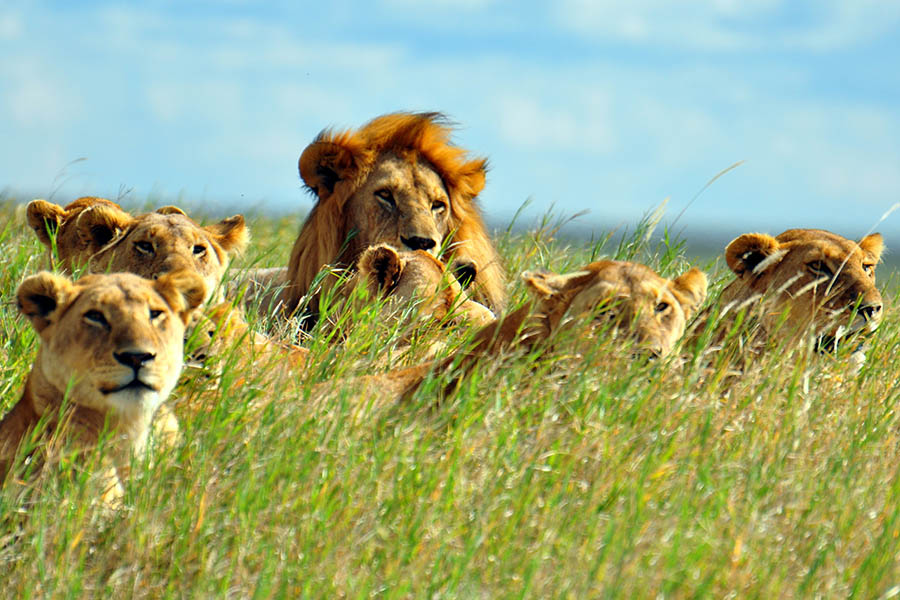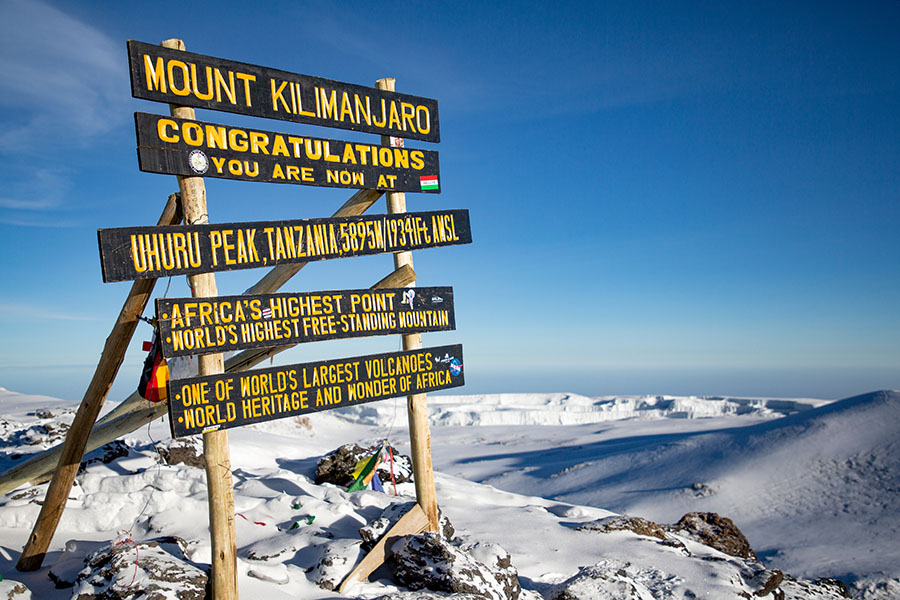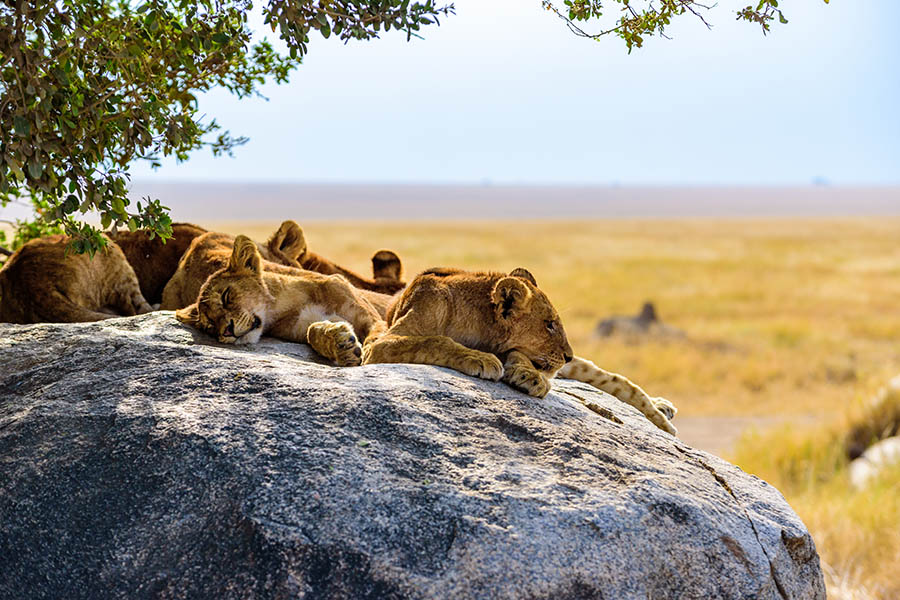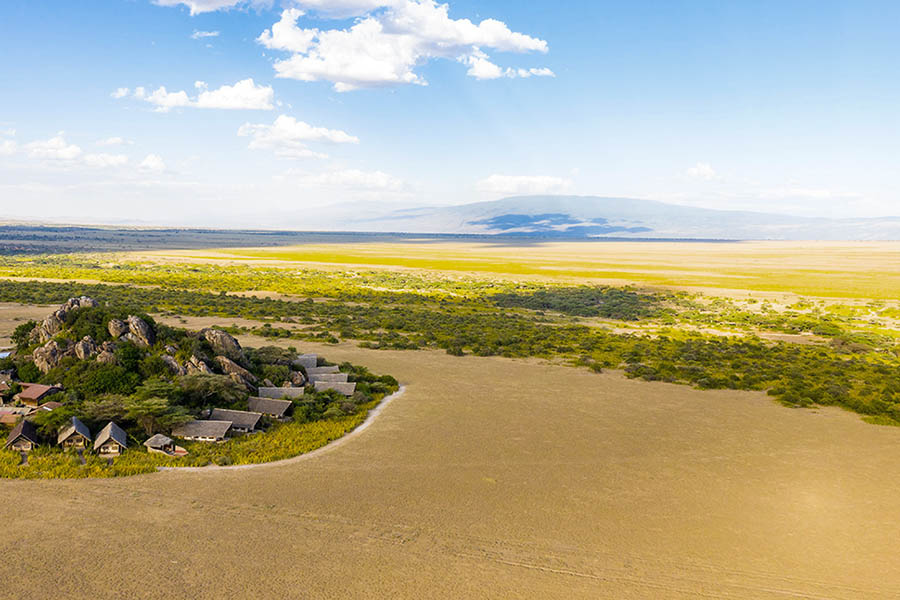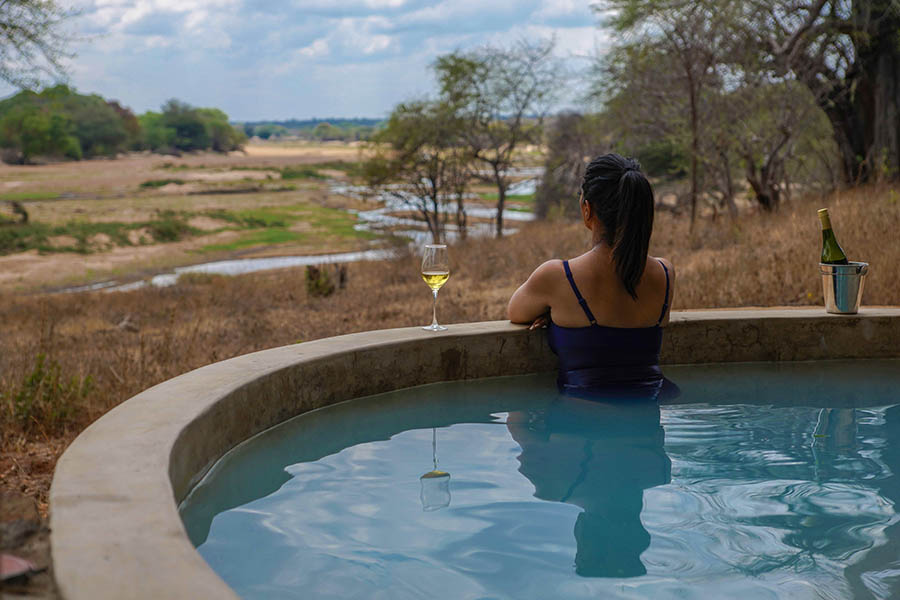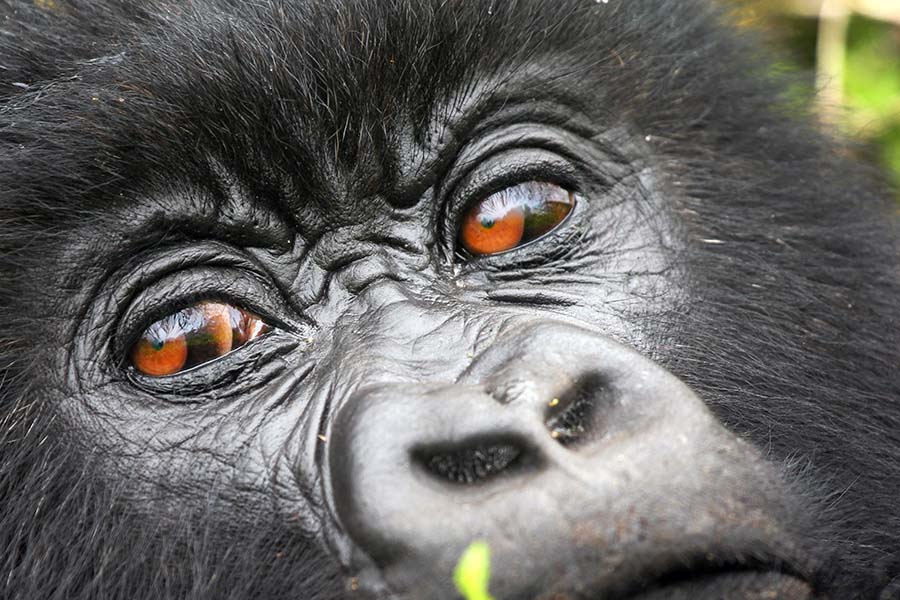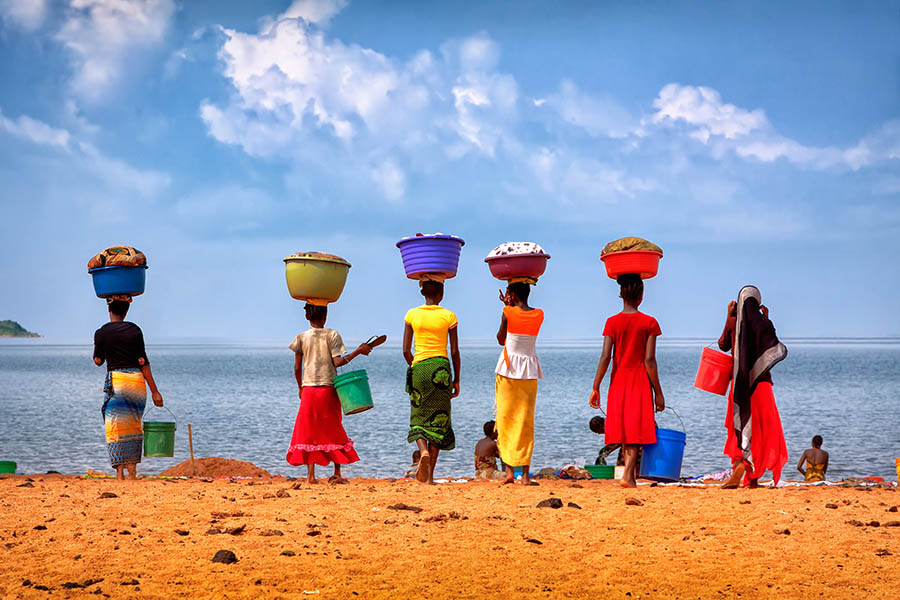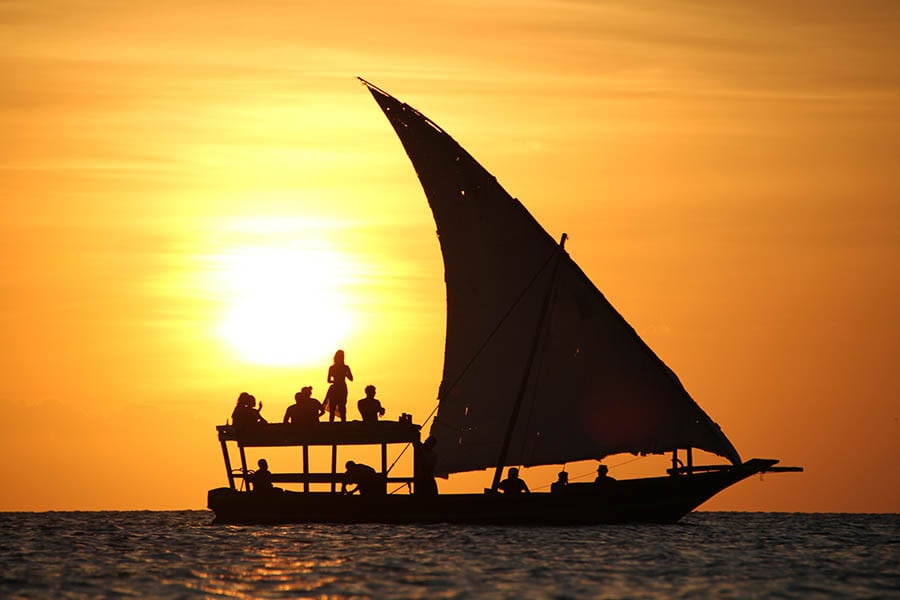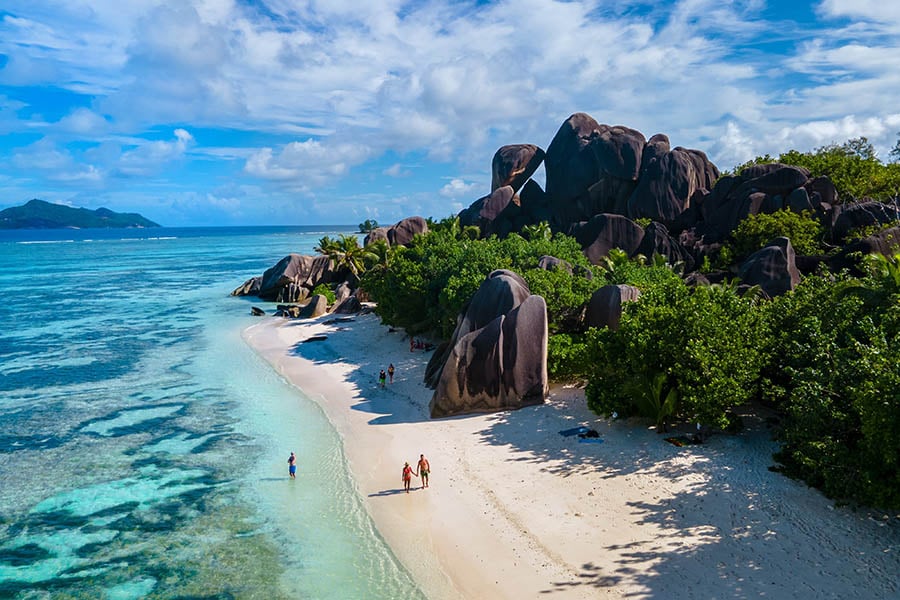Trekking the Lemosho Route, Kilimanjaro
A few years ago, my son George wrote a bucket list. Most of it seemed a bit optimistic at the time, but when I asked him what he'd like to do when he finishes his GCSE school exams, he didn’t hold back.
After chatting through some ideas, the challenge of climbing Mount Kilimanjaro together was the one that got us most excited. He's growing up fast (age 16) and it’s something I’ve always wanted to do too. With a keen sense that life is too short in recent years, and the prospect of quality father and son bonding time, how could I say no?
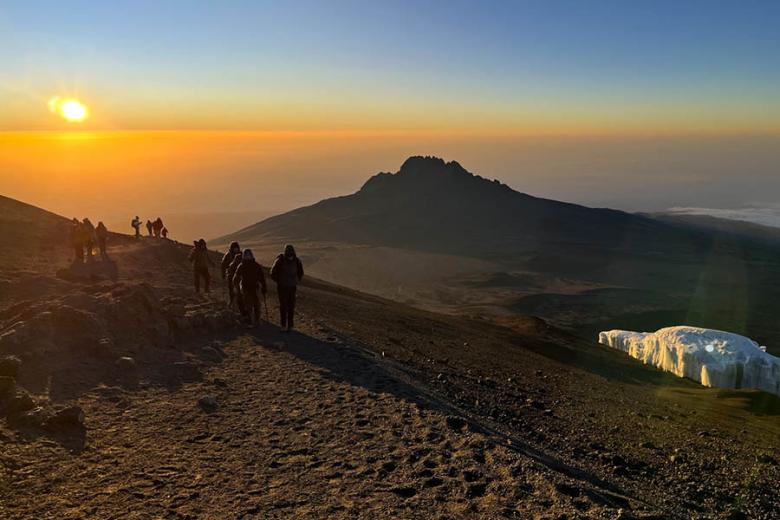
Choosing a route
Our first step was to choose a route. There are various options available (Lemosho, Machame, Marangu. Rongai, Shira, Northern Circuit, Umbwe), each with a different level of difficulty and duration. As this was a once-in-a-lifetime experience, we wanted to pick a route with a high success rate of summitting Kilimanjaro’s whopping 5895 metres.
Neither of us had ever done anything like this before, so we were happy to pay a bit extra for a longer route with a greater chance of success. You really do get what you pay for, as the best acclimatisation is time spent on the mountain. After some in-depth research, the scenic 8-day Lemosho Route ticked all our boxes (6.5 days trekking up and 1.5 coming down). That was the easy bit done.
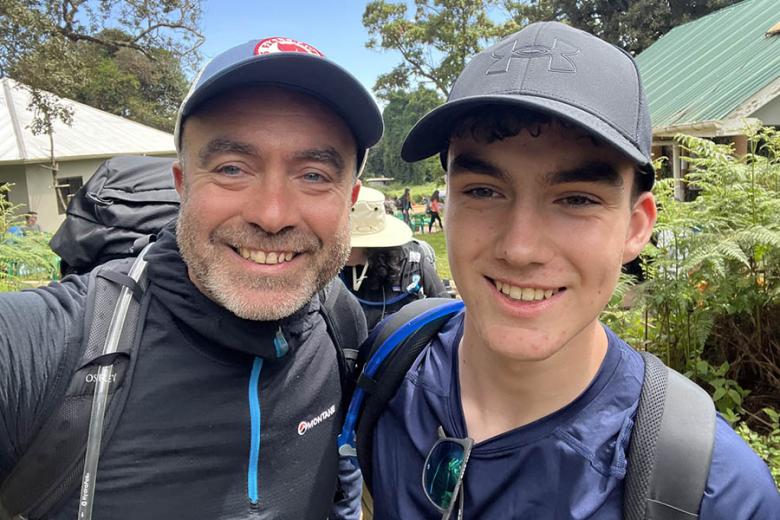
Climbing Kilimanjaro in July
We wanted to trek in July, right after George’s GCSEs. As luck would have it, July is the dry season in Tanzania and a fantastic month for trekking. I’m what some would call a fair-weather camper, and now appreciating just how cold it gets at night on the mountain, I can’t imagine doing this trek when it’s wet and your stuff can’t dry! The extra cost of going in high season when it’s dry and the terrain is safer is worth every penny.
Building the trek into a Tanzania holiday
This was my fourth trip to Tanzania in recent years, having enjoyed various safari experiences and relaxation time in Zanzibar. This time, we spent a few days on safari in the Serengeti before the trek, and a few days on the beaches of Pemba Island after the trek. At Travel Nation, we'll create a similar itinerary for you and take care of everything.
Supporting the local economy
For me, it was also important to trek with an operator registered with the Kilimanjaro Porters Assistance Project (KPAP). Their mission is to improve working conditions for local porters, including fair pay and providing suitable trekking gear. If you see a trek that seems too cheap, it begs the question – why? Rest assured that all treks we arrange at Travel Nation are KPAP-registered, with ethical treatment practices for porters.
Training and preparing the kit
Decisions made and trip booked, we trained in our local hills, and I sorted out all our kit. For the expensive stuff, like a top-quality sleeping bag, I’d consider hiring stuff (I can highly recommend Mick and Elaina at Trek Hire UK). A good sleep on the mountain is so important, and we were always toasty-warm at night when it was sub-zero higher up the mountain.
Meeting the group
The night before the trek began, we met our trekking group and lead guide, Lucia, at our lodge in Arusha. For everyone in our group of twelve, this was a bucket-list adventure, and we were all first-time trekkers at serious altitude. As the days went by, we all bonded and supported each other brilliantly.
You soon realise how much goes into these trips – it’s a massive feat of organisation. We had 50 supporting crew including 6 guides (1 guide for every 2 trekkers, which is higher ratio than most operators), 1 chef, and 43 amazing porters (both male and female).
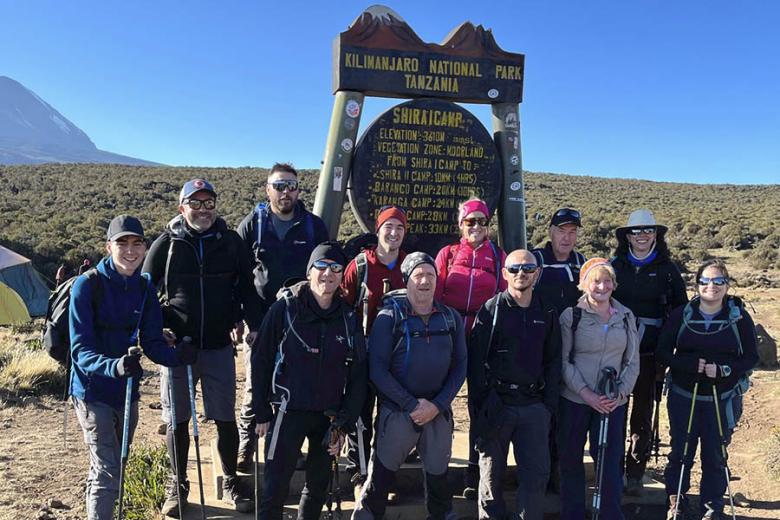
Day 1: And so it begins…
When we arrived at Lemosho gate to begin the trek, the anticipation and excitement was palpable. The trek started slowly (‘pole pole’ in Swahili) through dense mountainous forest. The path was really good and, before we knew it, we’d arrived at our first camp, Mount Mkubwa Gate at 2800m.
We soon realized that our crew was made up of superhuman people. Our guides seemed to know every inch of the path, while our porters each carried a mix of huge packs (often balanced on their heads), kit bags, tents, tables, chairs, and food.
Our chef was somehow able to conjure up all kinds of amazing dishes from extremely basic camping equipment. Throughout the trek, we enjoyed freshly made soups, fried fish, chicken, omelettes, and zingy salads plus rice, pasta, and even surprise homemade fries. Every meal was delicious.
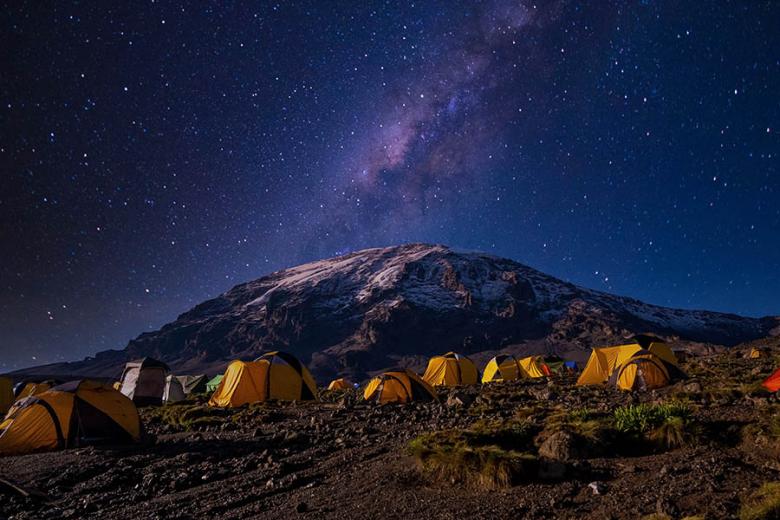
Day 2: The Moorland Zone
We were woken at 6am with a coffee at the door of our tent and a bowl of hot water for washing, a daily wake-up call for the whole trek. We started trekking incredibly early each day to ensure that we arrived at our camp before the intense afternoon sun hit the route. It's surprisingly hot in the daytime at this altitude, and the sun is extremely strong.
After a couple of hours, the forest suddenly made way for the ‘moorland zone’, higher up the mountain. Along the way, we all gasped in awe as Kilimanjaro’s peak came into view for the first time. Wow! It seemed so big, and so far away!
We climbed to around 3500m within a few hours, arriving at Shira Camp 1 for lunch and an afternoon of relaxation. Between us, we were feeling fairly good. Some people experienced mild headaches from the altitude, but nothing an ibuprofen couldn’t fix. That night felt really special, as were above the clouds for the first time and the stargazing was out of this world.
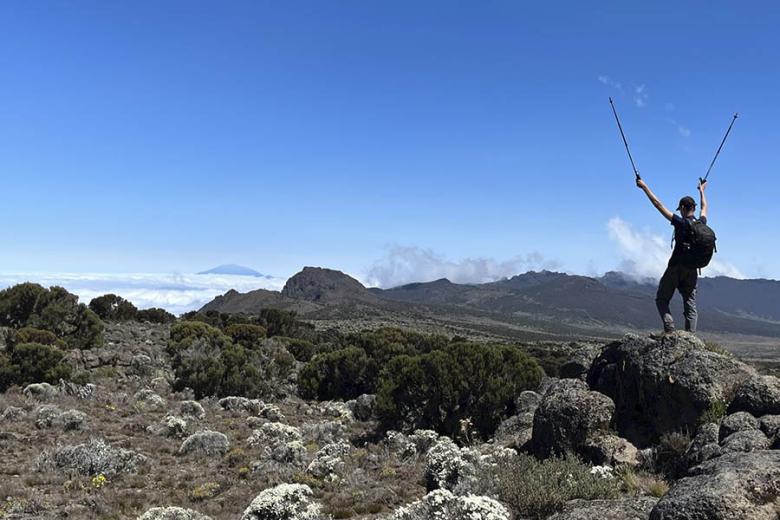
Day 3: Reaching Shira Camp 2
Today, I was struck by the changing colours of Kilimanjaro at various times of day, from classic mountain grey to crimson red at sunset. In the early morning, it was a dark shadowy figure backed by a deep blue sky. Just beautiful.
After breakfast, we set off towards Shira Camp 2. A mile or so later, we looked back to a stunning view of neighbouring Mount Meru (itself 4600m high) and a carpet of pure white cloud beneath us. It was the kind of view you only expect from a plane.
Part of the appeal of this trek was to live above the clouds for a week with George, completely off-grid and no phones. We had now reached that point, and it was bliss. We steadily climbed towards camp, at 3900m, in around five hours. The fried chicken, veg, and rice we were served up for dinner had never tasted so good!
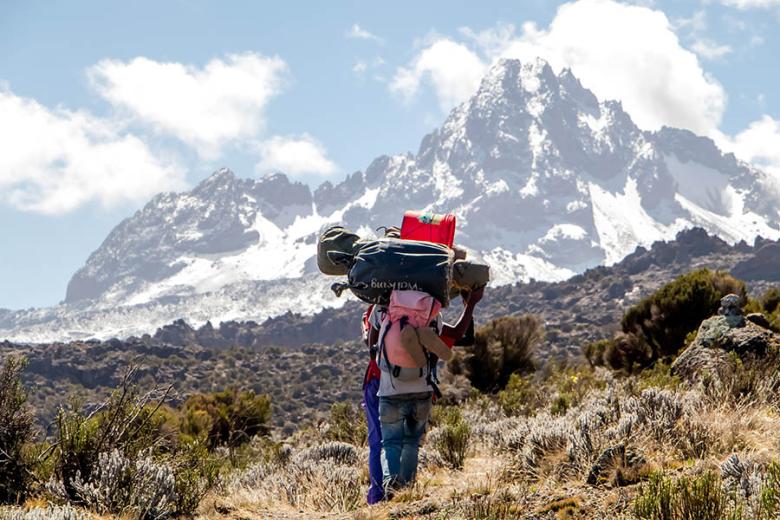
Day 4: Trekking to Lava Tower
This was a big day, as we climbed 750m in the morning to a whopping 4650m altitude at Lava Tower, to acclimatise for a few hours. This is a high alpine desert, and it looks like the moon. The air was noticeably thinner, and a few people were starting to feel the altitude.
I felt fine, but George struggled a little today, so we temporarily split from the group with our guide, to take it more slowly. I loved that we had this flexibility and by mid-afternoon we safely reached our next camp, Barranco, lower down at 3900m. This 'trek high sleep low' approach really helped our bodies adjust to the reduced oxygen, and we both recovered well once at camp.
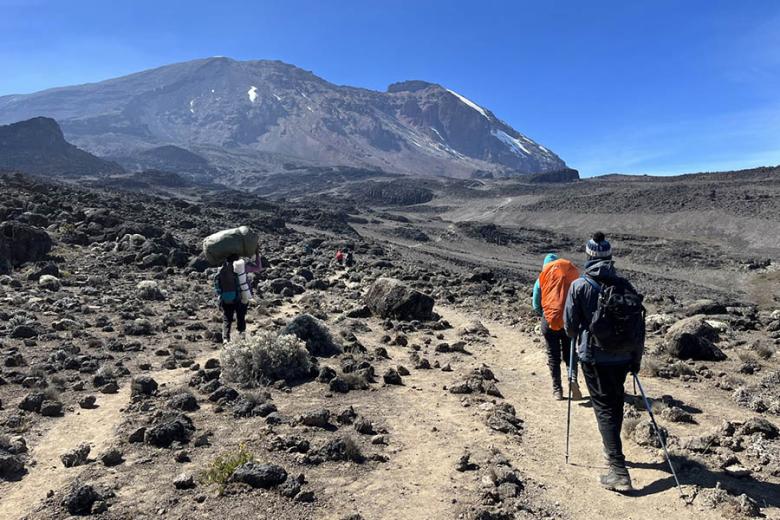
Day 5: The famous Barranco Wall
Good grief. During our evening briefing, our chief guide Lucia, told us that the Barranco Wall is not as hard as it looks. I was a bit skeptical about that. From the camp, all we could see was a tight zig-zag path up what looked like a near-vertical 250m cliff. As we set off, we put away any walking sticks, as we would need to grab the rocks ‘monkey style’ during the trek.
This was the most anxious I had felt so far, but George rebounded strongly from the previous day, and he was loving it! Our group ranged from 16 to 67 in age, and our guides were exceptional at supporting everyone at their own pace.
On the Barranco Wall, each section has its own puzzle to solve. It’s quite technical in places, with a specific order to place each foot and hand. Our amazing guides supported us every step of the way. The ‘kissing rock’ section really got my heart pumping. It’s a thin path around a wide rock with a fairly steep drop behind you, and there are no ropes. Yikes.
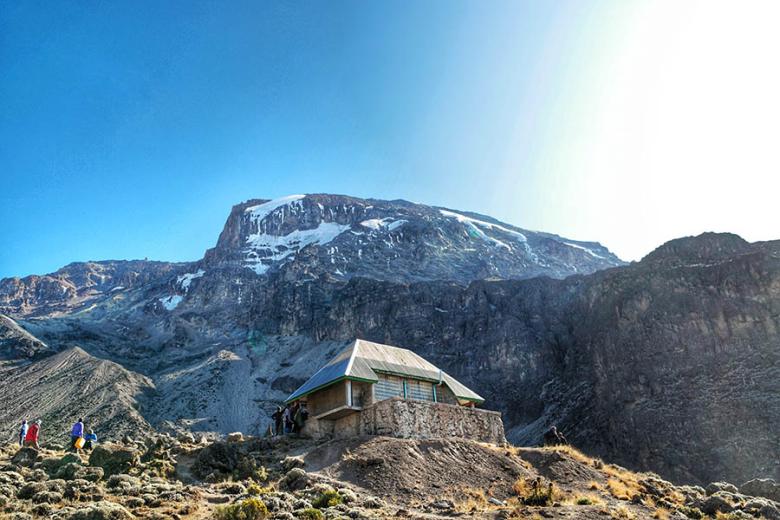
We all listened closely to the instructions, as there’s a method to this madness! The left hand grips the edge of the rock and the right hand grabs a piece of rock further round. Meanwhile, your feet shuffle along and then there’s a step to a rock ledge on the other side. In the end it was much easier than it looked and we all navigated it smoothly.
At the top of the Barranco Wall, we were rewarded with a stunning view over the clouds to Mount Meru and the deepest blue sky. We trekked on to Karanga camp at 4070m altitude in time for lunch and another relaxing afternoon. Just chilling above the clouds was magical.
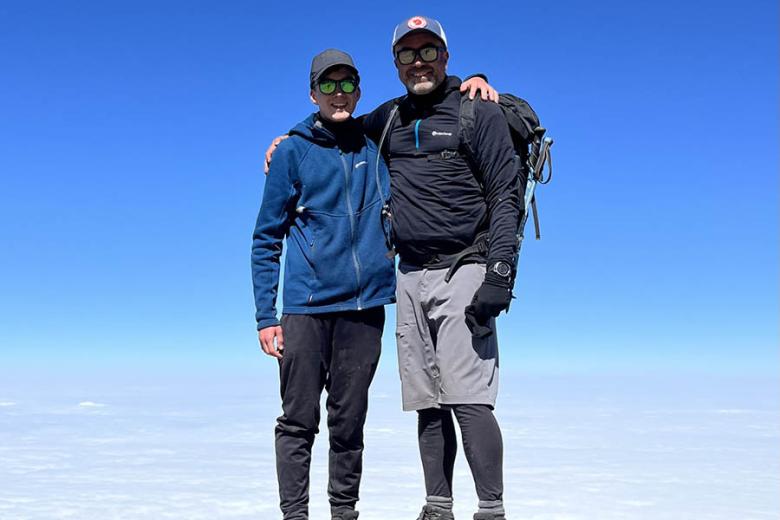
Day 6: The trek to base camp
Today felt different, as we were almost there! Our chief guide gathered our entire crew against the backdrop of Kilimanjaro for a morale-boosting sing-song of local Swahili favourites. We couldn’t help but join in and admire these incredible people. Everyone had a beaming smile on their face as we got ready for the day ahead.
The whole support team introduced themselves by name and we returned the gesture in Swahili, before setting off on our trek to base camp at Barafu (4670m altitude). It was a steady uphill trek, which we blitzed in just three hours. It’s fair to say that we all had a spring in our step that morning!
This was the last stop before our summit attempt later that night. As we relaxed around camp, the emergency helicopter appeared, and we saw two porters carrying someone down the summit track. I felt relieved that we’d taken the Lemosho route with the best acclimatization, but the stark reality of what we were trying to achieve struck home that day.
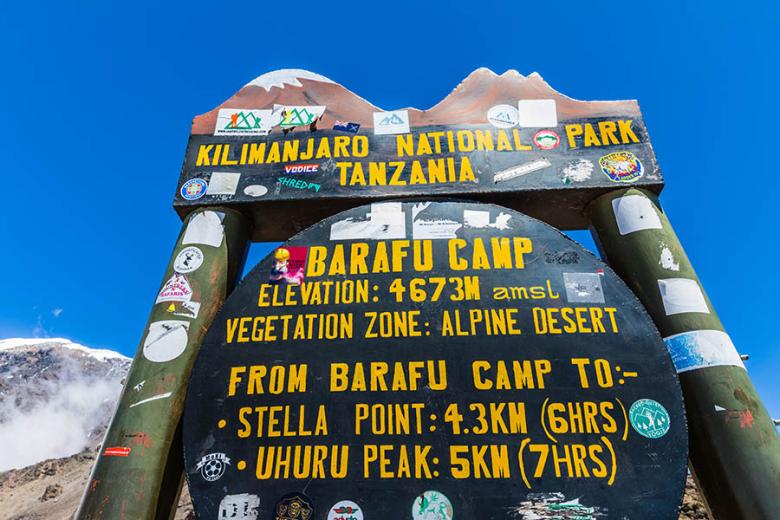
Day 7: Summit night
After very little sleep, we were woken at 11pm to get ready for our summit attempt at midnight. We aimed to reach Stella Point (5700m altitude) for sunrise, and then take the two-hour round-trip to Uhuru Peak, the ultimate prize and highest point in Africa, at 5895m.
We set off up the zig-zag trail in single file, with head torches lighting our way as we snaked our way upwards. It was bitterly cold and became even colder the higher we got. Before long, my water had frozen solid. As we climbed, we could see people from other groups being helped down the mountain. Whatever route they had chosen, it had been too much, and their only safe choice was to descend.
In our group, a few more people were feeling the altitude by now, but nothing too serious to manage. I felt good, and by around 6am all twelve trekkers in our group had made it to Stella Point for sunrise. The dawn light was beautiful, and we could even see the curve of the earth. A euphoric feeling which none of us will ever forget.
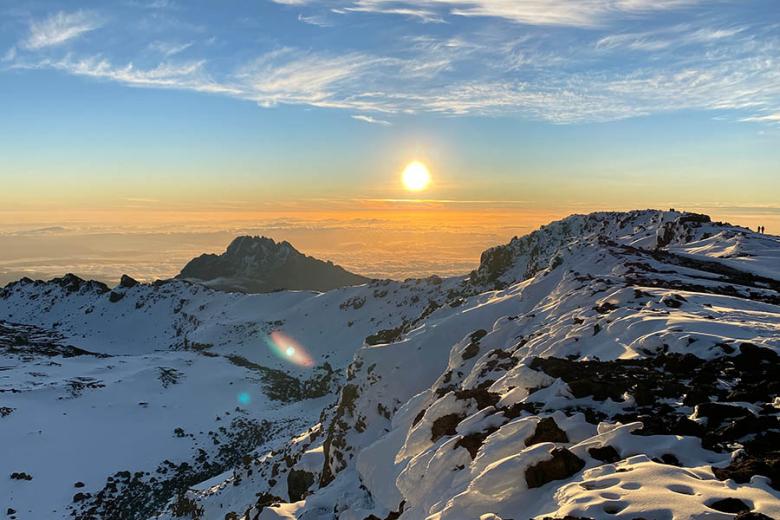
I couldn’t help but feel completely overwhelmed by what we had just achieved, and I gave George a massive hug. It had been such an awesome experience to enjoy with him, camping out every night, chatting away, and achieving something so amazing together.
The actual summit at Uhuru Peak was a bit further around the volcano rim. However, our adrenaline was pumping, and it felt like we had reached it in no time. We'd done it! As complete novices, we had conquered the highest freestanding mountain in the world together.
We couldn’t have felt happier. Now, we just had to get back down again! It was much quicker going down, but not so easy on the legs. We made it back to Barafu base Camp for brunch, before descending further to Mweka Camp (3100m) in the afternoon. This was a massive day and everyone was, understandably, feeling on top of the world.
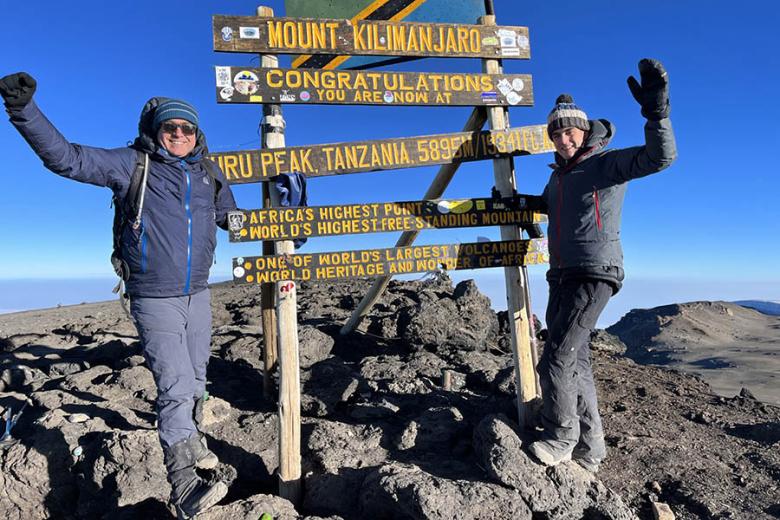
Day 8: The descent
The next day, we presented our crew with their tips (from memory, we tipped $250 per trekker - so $3,000 in total which was shared between all 50 crew). It was richly deserved and warmly received by everyone. Some of us donated some of our clothing and equipment too. We had a 100% success rate in our group, which is a testament to our exceptional guides, our teamwork, and choice of the safer 8-day Lemosho Route.
As we reached the Kilimanjaro National Park exit gate, we were greeted with a final Swahili singsong from our crew, as well as some icy-cold Kilimanjaro beers. It was a euphoric end to an epic, inspiring, and stunningly beautiful adventure. I’ll never forget it.
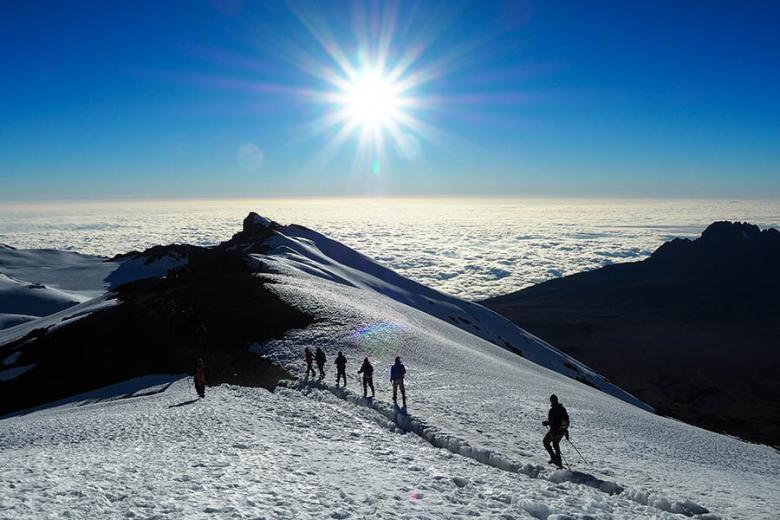
My top tips for trekking the Lemosho Route, Kilimanjaro
- Take a little bit of what you fancy, like Marmite or Nutella to spruce up the bread, porridge and pancakes.
- Pee bags! It’s unbelievably cold at night. Some members of our group carried ‘Peebol’ bags so that they didn’t have to leave their cosy tents when nature called. Wish we'd taken some.
- You get what you pay for. Be sure to use a good tour operator, like Travel Nation, who has trusted KPAP-registered partners on the mountain. Other key benefits include a good sleep (tents) and nutritious meals, which are both super important. Our partners even sent a porter a few hours ahead each morning, to secure the best location and views at the next camp.
- Consider Diamox, which is an anti-mountain sickness tablet. It does have side effects (it’s a diuretic), so you should always seek professional medical advice, to see if you’re safe to take it. I had no real issues with the altitude at all, but several who didn’t take it were fine too. So, it’s just a personal choice.
- Walking poles. I’m a convert! These were great, especially going down steep rocky sections to keep you safe. Your knees will thank you.
- Go off-grid! There’s no WIFI and very rarely even 3G, but we chose to have our roaming switched off for 8 days anyway. I’d highly recommend it.
- Take your time. There’s no better way to acclimatize than spending time on the mountain. The Lemosho Route takes eight days and has a 96% success rate. Other routes can be cheaper and quicker, but the success rate can be as low as 70%. Why risk it?
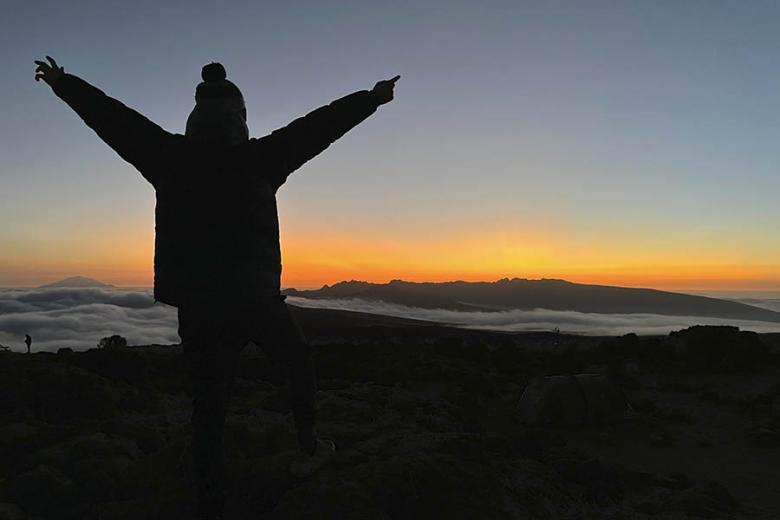
Ready to plan your trip to Tanzania?
If you’re looking for the adventure of a lifetime, we can build all kinds of tailor-made itineraries that include climbing Kilimanjaro. Mix the trek with a safari in the Serengeti and the Ngorongoro Crater, and end with some well-deserved barefoot bliss on Zanzibar. It’s a brilliant blend of wildlife, adventure, and relaxation. To get started, simply get in touch on 1273 320 580 or send us a quote request by email. You can also contact Jonny who wrote this blog directly [email protected]
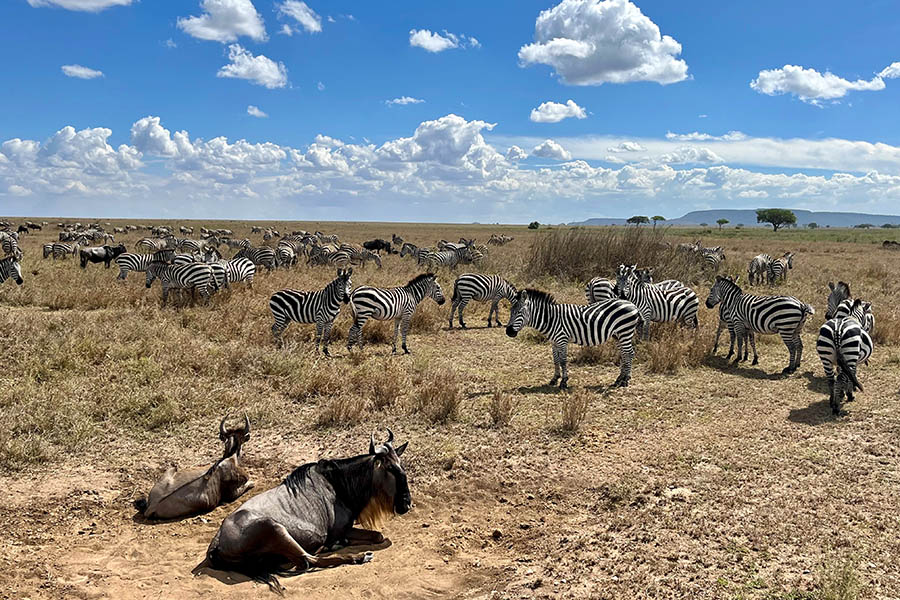
Northern Circuit: the perfect Tanzania safari itinerary
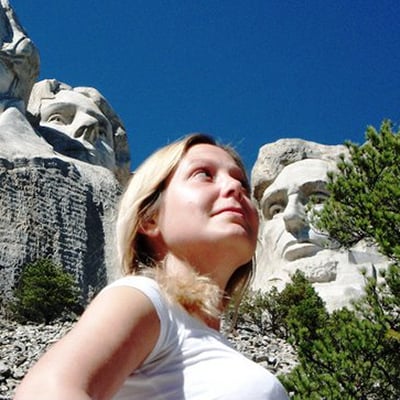
Bryony Dunn
Marketing Manager
at Travel Nation
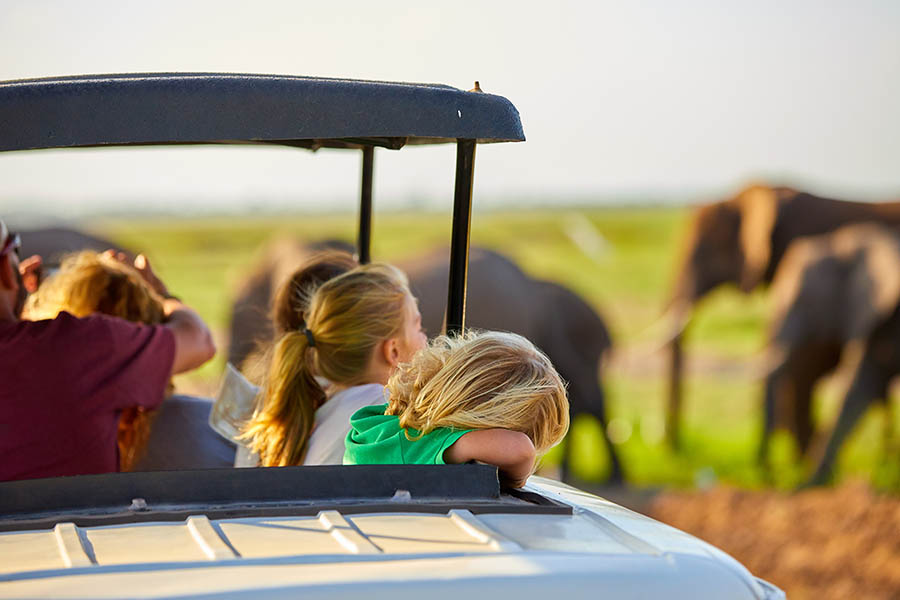
My top tips for planning a Tanzania family safari
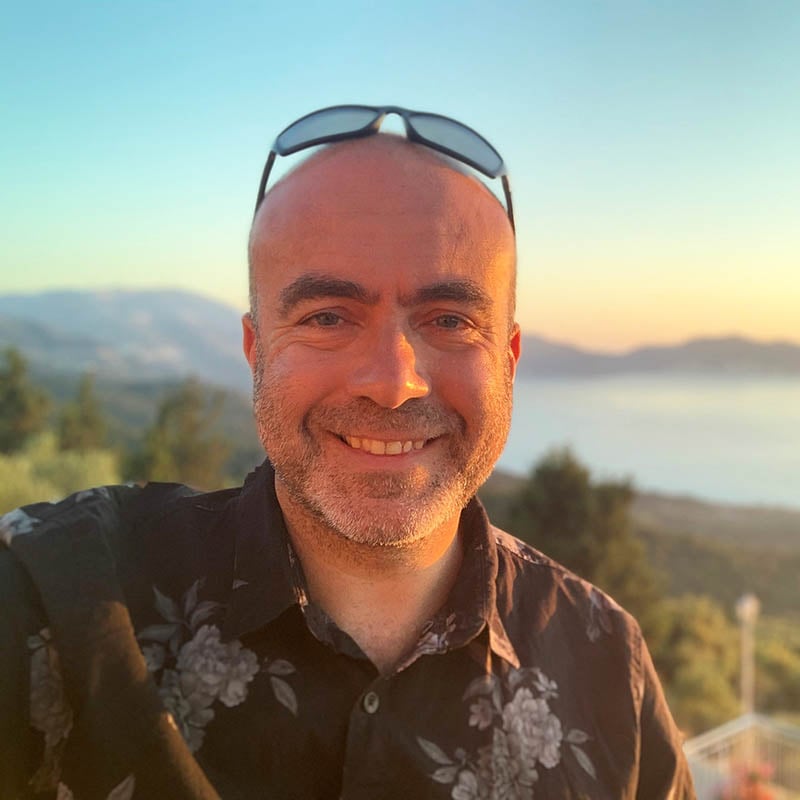
Jonny Goodall
Managing Director
at Travel Nation
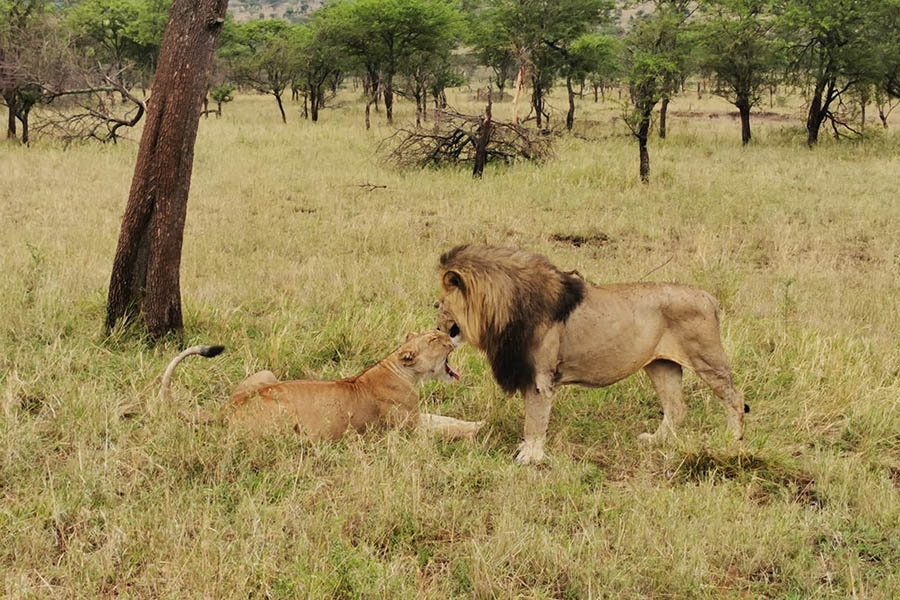
My stunning Ruaha and Serengeti safari tour
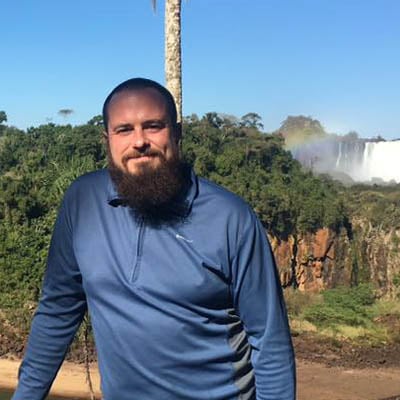
Scott Berry
UK Sales Team Manager
at Travel Nation
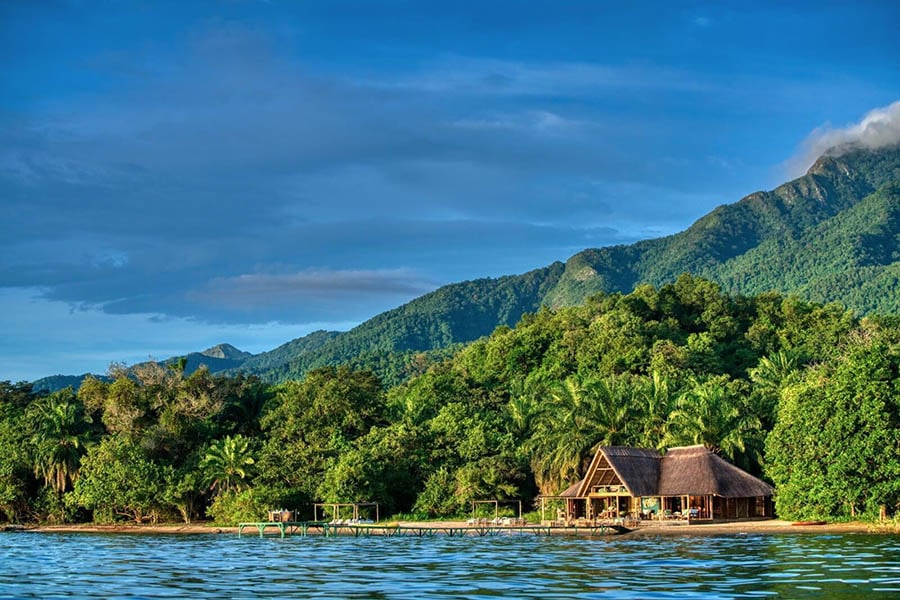
Escaping the crowds: how to find a secluded safari in Tanzania

Jonny Goodall
Managing Director
at Travel Nation
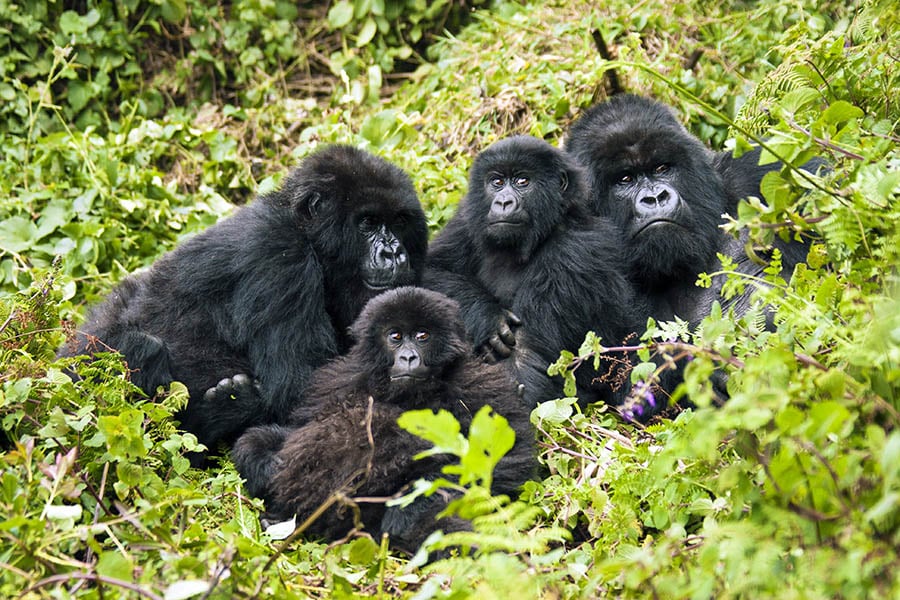
Gorilla trekking in Rwanda with a Tanzania safari
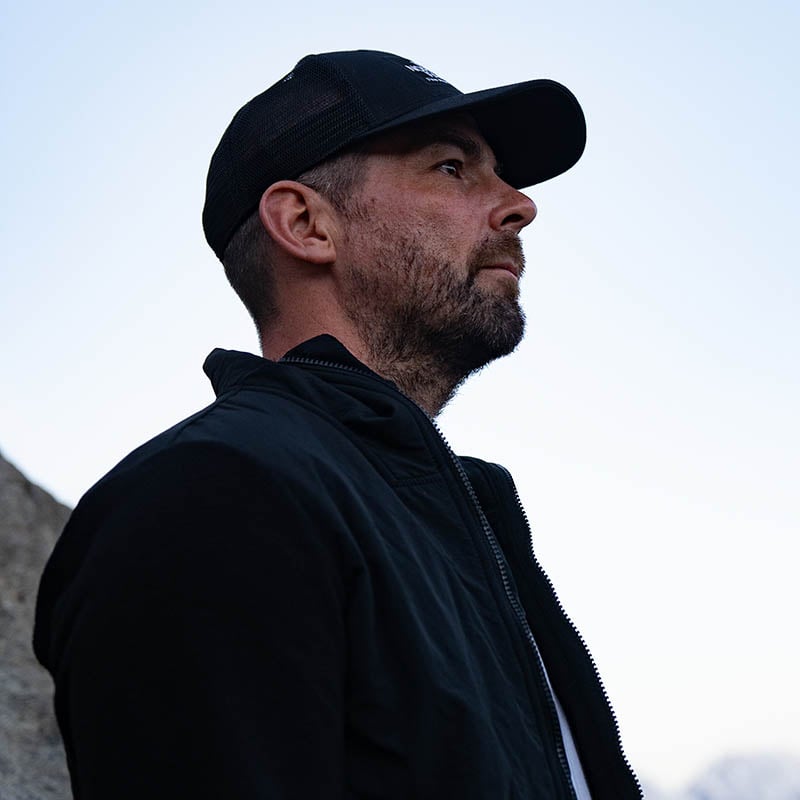
David Taylor
Senior Travel Consultant
at Travel Nation

About the author Jonny Goodall
Managing Director
Not ready to settle down after university, Jonny headed out on his travels. His stand-out travel highlights are self-drive through Namibia’s photogenic red dunes, a pit stop to visit the Moai statues on remote Easter Island and a month spent off-grid by a lagoon in Moorea, French Polynesia. Jonny joined Travel Nation in 2005 as a round the world specialist and is now our Managing Director. When he’s not working, you can find him playing tennis, planning his next family holiday or tending to his veggies.
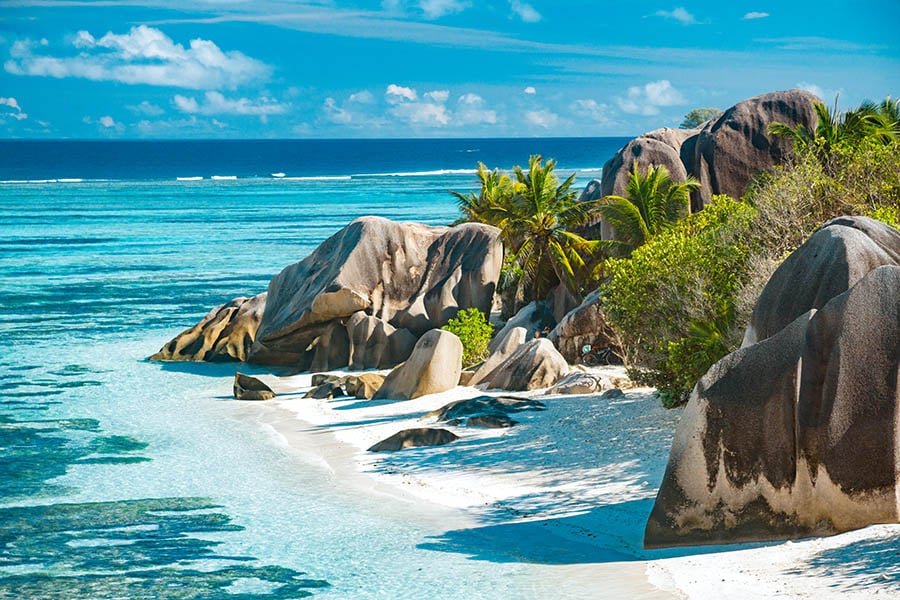
Last trip:
Seychelles